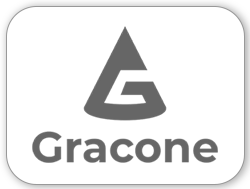
Products purchased for projects, as well as the many products purchased to support operations, production, and maintenance, can be broadly classified into two categories: Engineered Products and Commodities.
An engineer typically has more influence over the purchase of an engineered product than a commodity. So, what’s the difference between the two?
In the consumer world, a product is a finished good sold to customers while a commodity is a raw material used to make products. However, in the PDH Marketing world, the definitions are a bit different.
An engineered product is a designed product with specific or custom requirements. A commodity is a standard product without any appreciable specific or custom requirements.
An engineer typically has more influence over the purchase of an engineered product than a commodity.
Consider, for example, a piping system containing piping, fittings, and centrifugal pumps. The piping and fittings in the system are a commodity. You can ask several pipe suppliers to provide pricing for a 40’ long section of 6” Schedule 40, ASTM A106 Grade B pipe. Regardless of which company you select, the product that is delivered should be the same. The ASTM standard defines acceptable values for all the pertinent information needed to manufacture the pipe, including material composition, yield strength, dimensional tolerances, etc.
Now consider the centrifugal pump in the system. With a few possible exceptions, a pump is considered an engineered product, not a commodity. An engineer often specifies a pump to meet very specific performance requirements for a specific application. The engineer must consider flow rate and head requirements, pressure rating, NPSH, materials of construction, bearing design, mechanical seal (or packing) design, pump runout power requirements, and much more. Plus, the coupling and driver (i.e., electric motor or diesel engine) have specific requirements, as well.
Commodity purchases are often handled by a non-engineer working in the procurement department who makes decisions based primarily on commercial considerations.
As you can imagine, the engineer involved with the purchase decision has a lot to say about which pump manufacturer is technically acceptable, but not so much with the pipe. In my experience working on large projects in the past, engineers have very little, if any, involvement in the purchase of commodities. That task is handled by a non-engineer working in the procurement department who makes decisions based primarily on commercial considerations (price, delivery date, conformance with commercial terms and conditions, etc.)
On the other hand, the engineer would be heavily involved in the purchase of the centrifugal pump. Before a Request for Quotation (RFQ) is issued, the engineer develops specifications and datasheets that outline specific technical requirements that the pump manufacturer must meet. On some projects I have worked on, the engineer was involved in the development of the bidder’s list. On other projects, an Approved Manufacturer’s List (AML) already existed. Such lists are developed by Subject Matter Experts (engineers) on the functional team within the organization. The “function,” as it is called, does not work on projects, but rather functions as a resource to support project teams.
After the RFQ is sent out and proposals are received, the engineer will then perform a technical bid evaluation of the various proposals. The engineer’s review focuses on ensuring that the proposals conform to the specifications and performance requirements. The procurement team is responsible for the commercial bid evaluation. In some organizations, the engineer is not even allowed to see the pricing or other commercial terms. In my experience, if the engineer deems that a proposal is not technically acceptable, then that proposal is rejected, regardless of commercial considerations.
If you sell engineered products, it’s imperative that you win over the engineer who performs the technical bid evaluation.
As you can see, the engineer has enormous influence over the purchase of engineered products. If you are in the business of selling engineered products, it is imperative that you win over the engineer who is involved in the purchase process. But how do you do that?
Well, it doesn’t happen overnight. One good strategy is to find engineers and develop a relationship with them. Show them that you are knowledgeable about centrifugal pumps or electrical transformers or whatever it is that you sell. Establish yourself as an information resource they can rely on to help solve their problems.
PDH marketing is a great vehicle to introduce yourself to new engineers, as well as stay “top of mind” with engineers who have purchased from you in the past. You can use the 60 minutes in a webinar or lunchtime presentation to establish credibility with the audience of engineers. Show them that you are knowledgeable by educating them on a topic related to what you sell. If you sell centrifugal pumps, you can host a webinar on how to develop system curves or how to select the right mechanical seal. With a little bit of brainstorming within your organization, you could probably come up with a half dozen or more topics related to your product that you could cover in a webinar or a lunchtime presentation.
Once you demonstrate in a lunch & learn or a webinar that you are a reliable resource, some of the engineers in the audience will invariably approach you with questions about the topic or about specific applications/problems they are dealing with. Some of these queries will be “back of the room” discussions immediately after the PDH event, while others may come weeks or even months later. Your ability and willingness to help engineers solve their problems will elevate you and your company in the eyes of the engineer and will help you to build a relationship with the engineer. When the time comes that the engineer has a need and you have a product that fits the need, you will be in a great position to get added to the bidder’s list.
The focus of this discussion thus far has been on engineered products. But, what about commodities? Can PDH marketing be effective if you sell a commodity, such as a pipe or cable tray or structural steel? The answer is “yes,” but with some caveats.
As I mentioned previously, it has been my experience working on large projects that engineers have very little involvement in the purchase of commodities. However, that’s not necessarily the case for all projects. I have worked on some projects where the engineer developed the bidder’s list for commodities.
Some companies require project teams to use a company-wide approved manufacturer’s list (AML).
I have also worked on projects where the procurement group developed the bidder’s list for commodity purchases, yet I was able to suggest additional bidders to add to the list. I worked as an engineer on projects for two of the largest oil companies in the world. One of the companies had an Approved Manufacturer’s List (AML) and the other didn’t. On projects where a company-wide AML existed within the functional organization, engineers were generally not allowed to suggest additional bidders, but engineers were allowed to suggest bidders on projects executed by the other oil company that did not impose an AML on the project.
One more thing about AMLs: while engineers on the project team are not allowed to add bidders to the AML, who do you think develops the AML at the function level? That’s right, it’s engineers. Getting included in a large company’s AML can be a daunting task, but it’s definitely worth the effort if you succeed.
In my experience, the criterion for getting listed on an AML revolves primarily around quality. Consider a pipe manufacturer, for example. Before the manufacturer is added to the AML, a thorough review of the manufacturer’s quality management systems will be done. The customer’s engineer and quality manager will visit the facility to observe the manufacturing process and review ISO 9001 certifications, quality plans, material test reports (MTRs), and other quality-related documents. Some customers will go so far as to take samples from the production line and send them out for independent testing and verification of values listed on the MTRs, including chemical composition, yield strength, hardness, and Charpy impacts.
The bottom line is that there is value in PDH marketing for commodity products, but the pool of engineers that influence the purchase of commodity products is smaller than the pool of engineers that influence the purchase of engineered products.
Getting included in a company’s AML may be a daunting task, but it can pay huge dividends.
As for the engineers in your webinar who lack the influence to get you added to a bidders list, all is not lost. Some will move on to new projects and new positions in the future where they can influence commodity purchases. Make a good impression with your presentation and they may remember your company in the future. Invite them to multiple PDH events over the years and they will most certainly remember your company when they are in a position to add you to an AML or a project bidders list.


